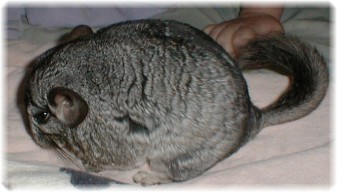 |
This was Clio in the early stages of her labor. I should point out that the entire process took less than a half hour.
|
| During contractions, which were short and (at least on the surface) painless, Clio would stretch her body either out along the floor or she would stretch up onto her hind legs. This picture shows Clio's final push and Loki's debut into the world.
In this interim, Clio bucked up on her hind legs and I could very clearly see the baby crowining (that is, the head starting to make its way out of Clio's body). At this point I was a little too overwhelmed to take any pictures--and also on the alert in case Clio needed my intervention. She didn't.
| 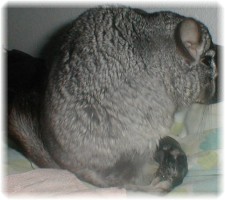 |
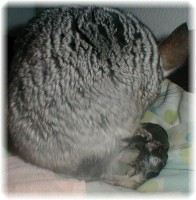 | And suddenly, there was Loki! The top of Loki's head crowned first. I would guess approximately five minutes passed between this first crowning and Loki's full birth. I'd also like to point out that to me it seemed that Loki was born almost folded into quarters. The little body had assumed a capsule-like birthing position, with the top of the head exiting first. I was rather amazed at how efficiently the entire process occurred--truly a wonder of nature.
|
| THIS ISN'T FOR THE SQUEAMISH, but it is a fact of chinchilla birthing. Clio, like all chinchilla mothers, took care of cleaning herself up after the birth by eating the afterbirth matter, including the placenta. I'm including this so that chinchilla owners might have an idea of what to expect before they find themselves in the live situation. This is perfectly normal behavior; I was even impressed with how thoroughly Clio managed to clean herself without human assistance. I suspect humans have become too sanitized to think in these terms, but the afterbirth is in fact full of nutrients vital for the new mother.
|
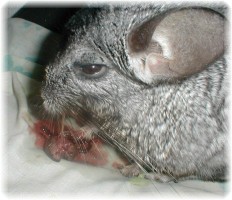 |
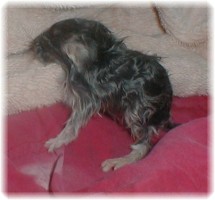 | Loki within ten minutes of birth. Note that Loki's fur is still soaked with birthing fluids. Usually the chinchilla mother dries off her baby, but in our case Clio was pretty tired from the experience. Thus, we had to take responsibility for getting Loki dry and warm. Be assured that this is nothing terribly unusual or difficult, just necessary.
|
| Chinchillas are often excellent parents, and our Clio is no exception. When Clio hear's Loki's little squeaking, she is immediately right by her baby. It's rather considerable knowing Clio as well as I do to mention how excellent she is as a mother. Honestly, I wasn't sure what to expect. But to watch this innate instinctual interaction is as much of a miracle as the birth itself. Wherever Loki might roam Clio will be close behind and watching.
| 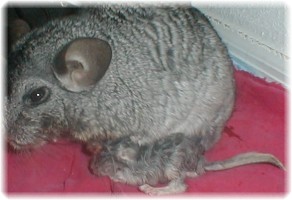 |
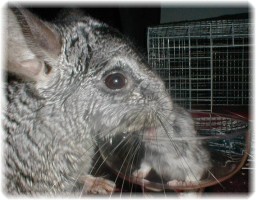 | This is Clio and Loki at about six hours following the birth. You can see that Loki is dried off and fluffy.
|
| Loki rests in my cupped hands. This picture is to give you some idea of the relative sizes between a chinchilla newborn an an adult human hand. When you should begin to handle a baby chinchilla is a point of debate among chinchilla keepers everywhere. It's important for mother and baby to know each other's scent--but it's also important that the baby know its human guardians, who might end up mostly responsible for their care (for instance, if the chinchilla mother can't or won't nurse). Ourselves, we handled Loki shortly after the birth, and in turn Loki has no trouble recognizing us or Clio.
| 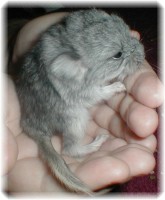 |